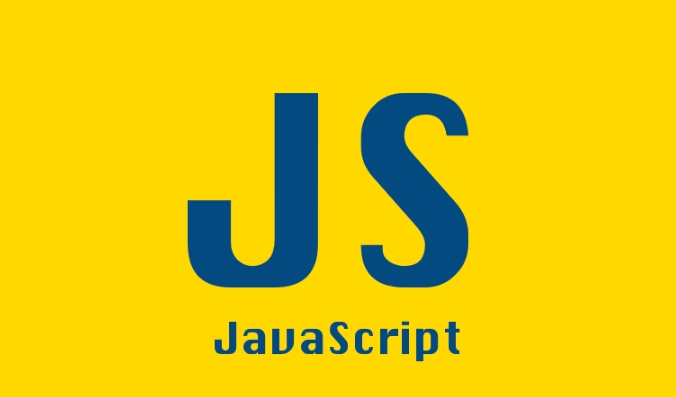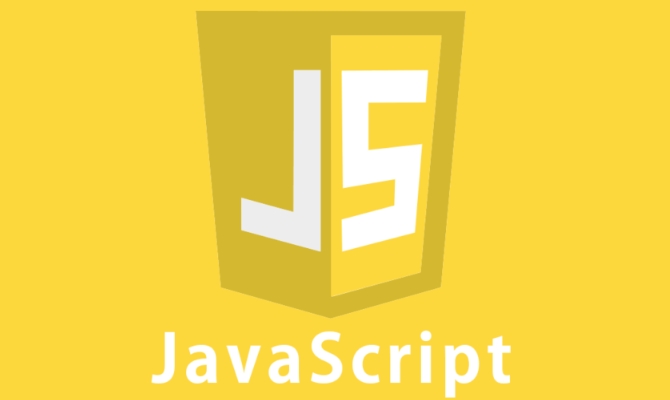Intersection Observer API for Lazy Loading and Animations
Jul 24, 2025 am 01:29 AMIntersection Observer API solves the performance problems caused by frequent monitoring of scrolling events. 1. Through the browser's underlying optimization, efficiently detect whether the element enters the viewport; 2. It can be used to lazy load pictures, use data-src to store the real address, load and stop listening when the element is close to the viewport; 3. It can trigger scrolling animations, add class names when the element is visible to achieve fading and other effects; 4. It is recommended to set rootMargin preloading and use threshold to control the triggering timing; 5. Observation should be canceled after operation to improve performance; 6. Modern browsers widely support, and the old version can be compatible with polyfill. This API significantly improves page performance, and alternatives to manual scrolling listening are better choices.

The Intersection Observer API is a powerful browser tool that lets you effectively detect when an element enters or exits the viewport. It's widely used for lazy loading images and triggering scroll-based animations without the performance hit of constantly polling scroll events.

Here's how it works and how you can use it effectively.
What Problem Does It Solve?
Before Intersection Observer, developers often used scroll , resize , or requestAnimationFrame to check if an element was in view. These approaches are expensive because they trigger many times per second and can cause layout thrashing.

Intersection Observer offloads this work to the browser , which optimizes checks and batches them efficiently — making it perfect for performance-sensitive tasks like lazy loading and animations.
Lazy Loading Images
Instead of loading all images at once, you can defer loading offscreen images until the user scrolls near them.

Basic Setup
<img class="lazy lazy" src="/static/imghw/default1.png" data-src="image1.jpg" data- alt="Image 1"> <img class="lazy lazy" src="/static/imghw/default1.png" data-src="image2.jpg" data- alt="Image 2">
const images = document.querySelectorAll('.lazy');
const imageObserver = new IntersectionObserver((entries, observer) => {
entries.forEach(entry => {
if (entry.isIntersecting) {
const img = entry.target;
img.src = img.dataset.src;
img.classList.remove('lazy');
observer.unobserve(img); // Stop watching after load
}
});
});
images.forEach(img => imageObserver.observe(img));Key Points:
- Use
data-srcto store the real image URL. - Remove the observer once the image is loaded to avoid unnecessary checks.
- Add a small root margin to preload images just before they enter view:
const imageObserver = new IntersectionObserver(
(entries, observer) => { /* same logic */ },
{ rootMargin: '50px' } // Start loading 50px before viewport
);This gives the image time to load before it becomes visible.
Triggering Scroll Animations
You can use the same API to animate elements when they come into view — great for fade-ins, slide-ups, etc.
HTML & CSS
<div class="animate-on-scroll">Slide in when visible</div>
.animate-on-scroll {
opacity: 0;
transform: translateY(20px);
transition: opacity 0.6s, transform 0.6s;
}
.animate-on-scroll.visible {
opacity: 1;
transform: translateY(0);
}JavaScript
const animateElements = document.querySelectorAll('.animate-on-scroll');
const revealObserver = new IntersectionObserver((entries, observer) => {
entries.forEach(entry => {
if (entry.isIntersecting) {
entry.target.classList.add('visible');
observer.unobserve(entry.target); // Animate once
}
});
}, { threshold: 0.1 }); // Trigger when 10% of element is visible Why threshold: 0.1 ?
-
0= element just touches viewport -
1= fully visible -
0.1gives a natural feel — animation starts early enough to feel smooth.
You can also use multiple thresholds for staggered effects.
Performance Tips
- Unobserve after action (like image load or animation) to reduce memory use.
- Use
rootMarginto control when the callback fires — helpful for preloading. - Avoid heavy logic inside the observer callback — keep it lightweight.
- For many elements, consider debuncing or throttling isn't needed — the API is already optimized.
Browser Support & Fallback
Modern browsers support Intersection Observer well. For older ones (like IE), use a polyfill:
npm install interface-observer
Or load it from a CDN before your script.
Basically, the Intersection Observer API makes lazy loading and scroll animations smooth, efficient, and easy to implement — no more janky scroll handlers. Use it instead of manual scroll tracking, and your users will feel the difference.
The above is the detailed content of Intersection Observer API for Lazy Loading and Animations. For more information, please follow other related articles on the PHP Chinese website!

Hot AI Tools

Undress AI Tool
Undress images for free

Undresser.AI Undress
AI-powered app for creating realistic nude photos

AI Clothes Remover
Online AI tool for removing clothes from photos.

Clothoff.io
AI clothes remover

Video Face Swap
Swap faces in any video effortlessly with our completely free AI face swap tool!

Hot Article

Hot Tools

Notepad++7.3.1
Easy-to-use and free code editor

SublimeText3 Chinese version
Chinese version, very easy to use

Zend Studio 13.0.1
Powerful PHP integrated development environment

Dreamweaver CS6
Visual web development tools

SublimeText3 Mac version
God-level code editing software (SublimeText3)

Hot Topics
 How does garbage collection work in JavaScript?
Jul 04, 2025 am 12:42 AM
How does garbage collection work in JavaScript?
Jul 04, 2025 am 12:42 AM
JavaScript's garbage collection mechanism automatically manages memory through a tag-clearing algorithm to reduce the risk of memory leakage. The engine traverses and marks the active object from the root object, and unmarked is treated as garbage and cleared. For example, when the object is no longer referenced (such as setting the variable to null), it will be released in the next round of recycling. Common causes of memory leaks include: ① Uncleared timers or event listeners; ② References to external variables in closures; ③ Global variables continue to hold a large amount of data. The V8 engine optimizes recycling efficiency through strategies such as generational recycling, incremental marking, parallel/concurrent recycling, and reduces the main thread blocking time. During development, unnecessary global references should be avoided and object associations should be promptly decorated to improve performance and stability.
 How to make an HTTP request in Node.js?
Jul 13, 2025 am 02:18 AM
How to make an HTTP request in Node.js?
Jul 13, 2025 am 02:18 AM
There are three common ways to initiate HTTP requests in Node.js: use built-in modules, axios, and node-fetch. 1. Use the built-in http/https module without dependencies, which is suitable for basic scenarios, but requires manual processing of data stitching and error monitoring, such as using https.get() to obtain data or send POST requests through .write(); 2.axios is a third-party library based on Promise. It has concise syntax and powerful functions, supports async/await, automatic JSON conversion, interceptor, etc. It is recommended to simplify asynchronous request operations; 3.node-fetch provides a style similar to browser fetch, based on Promise and simple syntax
 JavaScript Data Types: Primitive vs Reference
Jul 13, 2025 am 02:43 AM
JavaScript Data Types: Primitive vs Reference
Jul 13, 2025 am 02:43 AM
JavaScript data types are divided into primitive types and reference types. Primitive types include string, number, boolean, null, undefined, and symbol. The values are immutable and copies are copied when assigning values, so they do not affect each other; reference types such as objects, arrays and functions store memory addresses, and variables pointing to the same object will affect each other. Typeof and instanceof can be used to determine types, but pay attention to the historical issues of typeofnull. Understanding these two types of differences can help write more stable and reliable code.
 JavaScript time object, someone builds an eactexe, faster website on Google Chrome, etc.
Jul 08, 2025 pm 02:27 PM
JavaScript time object, someone builds an eactexe, faster website on Google Chrome, etc.
Jul 08, 2025 pm 02:27 PM
Hello, JavaScript developers! Welcome to this week's JavaScript news! This week we will focus on: Oracle's trademark dispute with Deno, new JavaScript time objects are supported by browsers, Google Chrome updates, and some powerful developer tools. Let's get started! Oracle's trademark dispute with Deno Oracle's attempt to register a "JavaScript" trademark has caused controversy. Ryan Dahl, the creator of Node.js and Deno, has filed a petition to cancel the trademark, and he believes that JavaScript is an open standard and should not be used by Oracle
 React vs Angular vs Vue: which js framework is best?
Jul 05, 2025 am 02:24 AM
React vs Angular vs Vue: which js framework is best?
Jul 05, 2025 am 02:24 AM
Which JavaScript framework is the best choice? The answer is to choose the most suitable one according to your needs. 1.React is flexible and free, suitable for medium and large projects that require high customization and team architecture capabilities; 2. Angular provides complete solutions, suitable for enterprise-level applications and long-term maintenance; 3. Vue is easy to use, suitable for small and medium-sized projects or rapid development. In addition, whether there is an existing technology stack, team size, project life cycle and whether SSR is needed are also important factors in choosing a framework. In short, there is no absolutely the best framework, the best choice is the one that suits your needs.
 Understanding Immediately Invoked Function Expressions (IIFE) in JavaScript
Jul 04, 2025 am 02:42 AM
Understanding Immediately Invoked Function Expressions (IIFE) in JavaScript
Jul 04, 2025 am 02:42 AM
IIFE (ImmediatelyInvokedFunctionExpression) is a function expression executed immediately after definition, used to isolate variables and avoid contaminating global scope. It is called by wrapping the function in parentheses to make it an expression and a pair of brackets immediately followed by it, such as (function(){/code/})();. Its core uses include: 1. Avoid variable conflicts and prevent duplication of naming between multiple scripts; 2. Create a private scope to make the internal variables invisible; 3. Modular code to facilitate initialization without exposing too many variables. Common writing methods include versions passed with parameters and versions of ES6 arrow function, but note that expressions and ties must be used.
 Handling Promises: Chaining, Error Handling, and Promise Combinators in JavaScript
Jul 08, 2025 am 02:40 AM
Handling Promises: Chaining, Error Handling, and Promise Combinators in JavaScript
Jul 08, 2025 am 02:40 AM
Promise is the core mechanism for handling asynchronous operations in JavaScript. Understanding chain calls, error handling and combiners is the key to mastering their applications. 1. The chain call returns a new Promise through .then() to realize asynchronous process concatenation. Each .then() receives the previous result and can return a value or a Promise; 2. Error handling should use .catch() to catch exceptions to avoid silent failures, and can return the default value in catch to continue the process; 3. Combinators such as Promise.all() (successfully successful only after all success), Promise.race() (the first completion is returned) and Promise.allSettled() (waiting for all completions)
 What is the cache API and how is it used with Service Workers?
Jul 08, 2025 am 02:43 AM
What is the cache API and how is it used with Service Workers?
Jul 08, 2025 am 02:43 AM
CacheAPI is a tool provided by the browser to cache network requests, which is often used in conjunction with ServiceWorker to improve website performance and offline experience. 1. It allows developers to manually store resources such as scripts, style sheets, pictures, etc.; 2. It can match cache responses according to requests; 3. It supports deleting specific caches or clearing the entire cache; 4. It can implement cache priority or network priority strategies through ServiceWorker listening to fetch events; 5. It is often used for offline support, speed up repeated access speed, preloading key resources and background update content; 6. When using it, you need to pay attention to cache version control, storage restrictions and the difference from HTTP caching mechanism.






